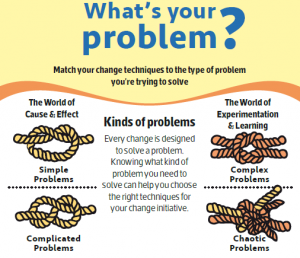September 20, 2016
![]()
You have a variety of digital channels at your disposal to reach prospects and customers — website, mobile app, email, social media, digital advertising — just to name a few. If you provide generic, unpersonalized messages across channels, it’s relatively easy to ensure consistency. But the minute you start to personalize your communications on any of these channels, it can become obvious that your messages don’t align, or that you can only recognize someone in one specific channel.
Such inconsistencies can become particularly apparent for B2B companies with long sales cycles. In these circumstances, you want to initiate a conversation to guide a prospect through the buyer’s journey. Many marketers begin this process by placing a prospect into an email nurture campaign, often with the goal of driving that person to the website to take various actions at various times. But in many cases the website will not appear to recognize the prospect, treating her like a completely different person. This results in two separate conversations that take place across email and the company website.
These disparate conversations can and should be blended together — any emails sent to the prospect should be personalized, taking into consideration all actions she has already taken on the website, while all messages on the website should consider the email communications that have already taken place.
Bringing Two Conversations Together
Let’s walk through an example of how this is done. Let’s say your company sells a SaaS-based product, and my company is a potential prospect for you. After I interact with your booth at a tradeshow, you put me into a general email nurture track to continue the conversation with your company.
My subsequent interactions with your company – via emails and your website – might look like this:
Email Website 1 As the first step in the nurture campaign, you recommend that I read an introductory blog post. 2 I click to read the blog post, then I navigate around your site for a few minutes. 3 During this time, I engage predominantly with content on one of your top use cases (we’ll call it use case A), and I also download one of your most popular eBooks. 4 Now that you know I’m interested in use case A, you offer me additional content related to that use case (but you don’t send me that eBook I already downloaded).
You also move me into a specific nurture track for use case A and continue to send me relevant content. 5 Shortly thereafter I visit your website again and request a demo. 6 You send me an email indicating that you know I requested a demo and that I will be contacted by a representative. You also suggest I read a blog post about evaluating vendors in the meantime.
Finally, you remove me from the nurture track because I am now in touch with a salesperson.
Once I start a conversation with the salesperson, the conversation should not start from scratch. The salesperson should have access to all my interactions with the company, including email and web interactions, and advance the conversation forward with that information and context in mind.
Final Thoughts
Note in the previous example that at each point the company is incorporating the prospect’s actions from the website into a personalized email so that she never receives anything irrelevant or redundant.
This is critical because email nurture programs are often developed according to the journey that we want buyers to take, not the journey that they will actually take. A prospect can go through stages in a different order than we expect or may skip steps completely. When you incorporate the actions your prospects have already taken and the preferences they have demonstrated across channels, you can provide them with the information they need to follow their journey at their own pace.
The first step to effective cross-channel personalization is being able to identify and track your prospects and customers across channels.
Digital & Social Articles on Business 2 Community
(25)






